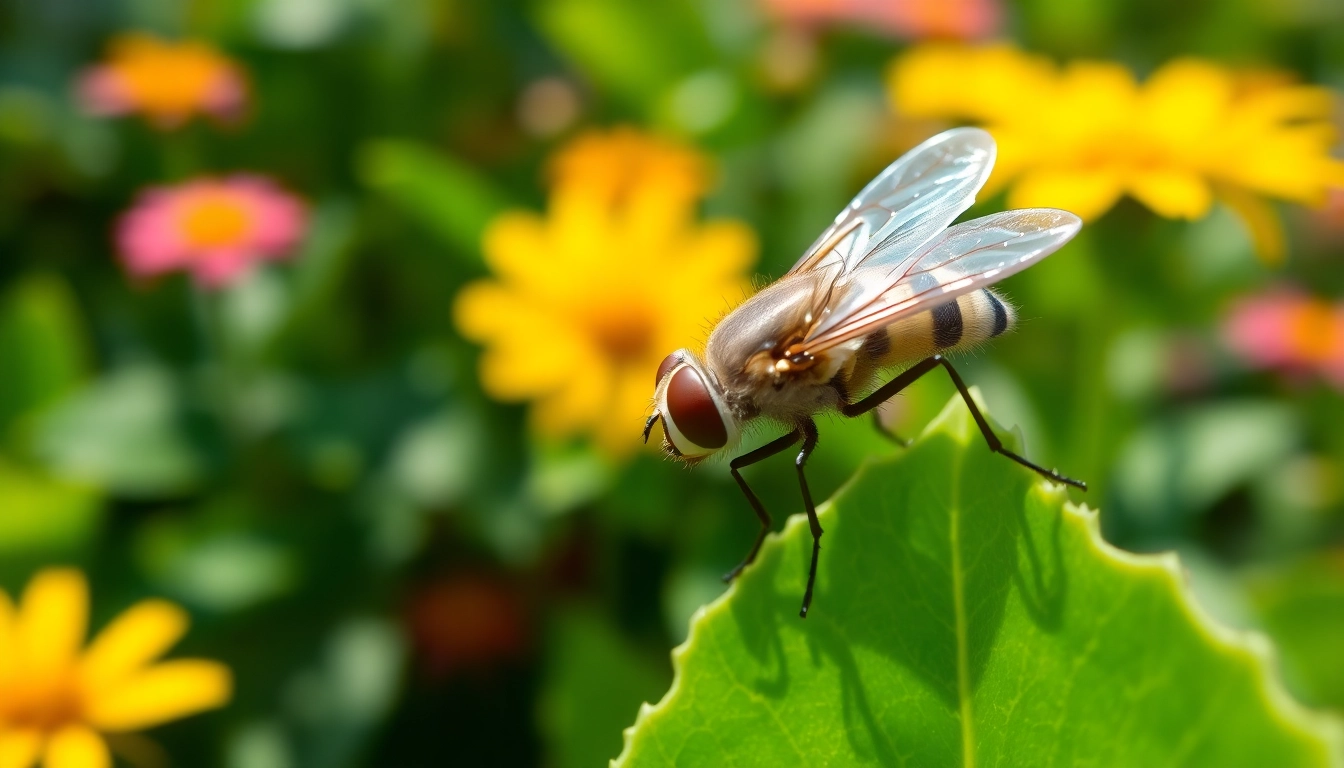What You Need to Know About Flies
Overview of Fly Anatomy
Flies are fascinating creatures with complex anatomical structures that contribute to their survival and adaptability. One of the most distinctive features of flies is their compound eyes, which possess numerous lenses allowing them to have a nearly 360-degree field of view. This unique vision aids them in detecting movement and potential threats, making it easier to escape from predators.
Another significant anatomical aspect is their mouthparts, which vary greatly among different fly species. Most flies possess sponging or lapping mouthparts that enable them to feed on liquid substances like nectar, decaying organic matter, or even excrement. Their legs often feature tiny, hair-like structures that assist in sensing their environment and adhering to various surfaces.
Common Species of Flies
There are over 120,000 species of flies, but some of the most common include:
- House Fly (Musca domestica): Perhaps the most ubiquitous fly, house flies are known for their adaptability and presence in human habitats.
- Fruit Fly (Drosophila melanogaster): A critical species in genetic research, fruit flies are small but play a significant role in understanding inheritance and development.
- Flesh Fly (Sarcophagidae): These flies are vital in forensic science, as they are often the first to arrive at decomposing bodies.
- Green Bottle Fly (Lucilia sericata): Known for their metallic green color, they are often found on decaying matter and are essential in the ecosystem for decomposition.
Distinctive Biological Features
Flies exhibit several distinctive biological features that not only aid in their survival but also enhance their reproduction and feeding strategies. One such feature is their highly developed olfactory system, which enables them to detect scents from considerable distances. This ability aids in locating food and mating partners.
Additionally, flies possess a unique escape response. Upon detecting a threat, they can react with extraordinary speed, thanks to their rapid wing beats, often reaching up to 1,000 beats per minute. This incredible agility is key to their survival in a world filled with predators.
Do Flies Pee? The Facts
Understanding Fly Excretion
Excretion in flies is a process quite different from mammals. Unlike mammals that have a complex urinary system, flies excrete waste in the form of a semi-solid substance. This “urine” primarily consists of nitrogenous compounds and undigested materials, which they expel through their anus. Understanding this process is crucial for comprehending not only fly biology but also their role in the ecosystem.
When exploring whether do flies pee, it’s essential to distinguish that while flies do indeed excrete waste, their method differs significantly from how mammals urinate. Their excretion includes a combination of liquid and solid waste, and it is influenced by their diet, environmental conditions, and hydration levels. The waste expelled can also play a role in nutrient cycling in their habitats.
Comparative Analysis with Other Insects
Compared to other insects, flies have a relatively simple excretory system. For instance, many insects utilize Malpighian tubules, which help in filtering waste from the hemolymph (the insect equivalent of blood) and excreting it efficiently. While flies have a similar structure, they adapt their waste excretion to their metabolism and dietary needs. This adaptability provides them with an evolutionary advantage, allowing them to thrive in diverse environments.
Scientific Studies and Findings
Numerous studies have investigated the excretion processes in insects, including flies. Research has shown that the nutrient composition of fly excretion can vary based on environmental factors and dietary intake. This nutrient-rich excrement is often utilized by plants and microorganisms, illustrating the interconnectedness of ecosystems.
Advanced techniques, such as metabolomics, have enabled scientists to analyze the metabolic waste products produced by flies, revealing insights into their digestion and health. Such research is vital, not only for entomology but also for agricultural and ecological studies, as understanding fly biology can contribute to effective pest management strategies.
The Role of Moisture in Fly Behavior
How Flies Obtain Water
Water is essential for all living organisms, including flies. However, their methods of hydration differ from that of larger organisms. Flies typically obtain moisture from their diet; this includes sugary substances such as nectar and fermented fruit, which provide both nutrients and hydration.
Moreover, flies can also absorb moisture directly from the environment in humid conditions, which is particularly advantageous in their often fluctuating habitats. This versatile approach to hydration allows them to survive in various climates, from arid regions to damp environments.
Effects of Temperature on Fly Physiology
Temperature is a critical factor that influences fly physiology. These ectothermic creatures rely on external heat sources to regulate their body temperature, which directly affects their metabolic processes. In warmer temperatures, flies display increased activity levels, faster development rates, and shorter life cycles.
However, extreme temperatures can lead to physiological stress, impacting their ability to reproduce and survive. Understanding these temperature thresholds is vital for predicting fly population dynamics, especially in the face of climate change.
Behavioral Adaptations in Insect Life
Behavioral adaptations are crucial for flies to thrive in their environments. For example, many fly species exhibit seasonal behavioral patterns as a response to climatic changes. In colder months, some species enter a state of diapause, essentially pausing their developmental cycle until conditions improve.
Additionally, flies display various foraging behaviors to optimize resource acquisition. From aggressive territorial displays to cooperative feeding strategies among different species, these behavioral adaptations are key to their survival and prosperity in diverse ecosystems.
Common Myths About Flies
Myths vs. Facts: Excretion Processes
Various myths surround the biology of flies, particularly concerning their excretion processes. One common myth is that flies “urinate” like mammals do. In reality, as previously mentioned, flies excrete a mixture of liquid and solid waste, which often goes unnoticed due to its small volume.
Another pervasive misconception is that flies can only transmit diseases through their saliva. While saliva can harbor pathogens, flies can also carry germs on their bodies, and their waste can contaminate food sources, leading to potential health risks. Understanding these realities is crucial in efforts to manage fly populations effectively.
Public Perceptions of Flies
The public often harbors negative perceptions of flies, viewing them as mere nuisances or symbols of uncleanliness. This perspective can overshadow the ecological benefits these insects provide, such as decomposition and nutrient recycling. Promoting a balanced understanding of flies not only helps mitigate fear but also encourages appreciation for their ecological roles.
Educating the Community on Fly Biology
Educating communities about fly biology is essential in fostering respect for these insects and understanding their ecological importance. Public awareness campaigns can debunk myths, highlight the role of flies in ecosystems, and provide guidelines for effective pest management. Schools and environmental organizations can collaborate to develop educational content that emphasizes fly biology, behavior, and their contributions to ecosystem health.
Further Research and Implications
Importance of Research on Insect Biology
Research on insect biology, particularly concerning flies, is crucial for advancing our understanding of biodiversity, ecology, and evolution. Insects play vital roles in pollination, decomposition, and food webs, making their study paramount in appreciating and conserving ecosystems.
Furthermore, comprehending the biology of flies aids in developing sustainable pest management practices, thereby reducing the reliance on chemical pesticides and mitigating environmental impacts. Interdisciplinary approaches that incorporate genetics, ecology, and behavioral studies pave the way for innovative solutions in entomological research.
Applications in Pest Control
Understanding fly biology has significant applications in pest control strategies. By exploring their life cycles, feeding habits, and reproductive behaviors, researchers can formulate targeted approaches to manage fly populations effectively. For example, biological control methods, such as introducing natural predators or parasites, utilize the natural ecological balance to keep fly numbers in check.
Moreover, understanding the specific needs and vulnerabilities of different fly species can lead to the development of more effective traps and baits, minimizing the need for harmful chemicals. Integrated pest management practices that incorporate biological insights are essential for sustainable agriculture and public health.
Environmental Impact of Insect Studies
Studying flies and other insects has profound implications for addressing environmental issues. Insects, including flies, are bioindicators that reflect the health of ecosystems. Research into their populations and behavior allows for the assessment of environmental changes and the impacts of pollutants on biodiversity.
Incorporating insect studies into environmental policies can enhance conservation efforts, promote biodiversity, and inform habitat restoration projects. By understanding the ecological roles flies play, we can tailor our conservation strategies to support healthy ecosystems for future generations.



